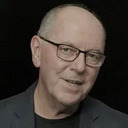I experienced an intriguingly different society when I worked in New Zealand
I’m Australian, and when I worked in New Zealand from 2014 to 2016, I experienced an intriguingly different society. After a few months, I thought, “What is so refreshingly different about this country?”
Around six months after arriving, I experienced a revelation as the answer emerged one morning as I made my ten-minute walk to work from where I lived in Te Aro Wellington.
In 2014 I left Sydney to work for a Wellington-based not-for-profit organization that had been formed in 2004 with a mission to support entrepreneurial Wellingtonians.
My previous experience of living in New Zealand was in the mid-1990s when I managed a project to outsource the customer service operations of Telecom New Zealand. That required my presence in Auckland for almost twelve months on a fly-in, fly-out basis. When I finally came home, I knew I’d been working with highly innovative Telecom executives. I also knew there was nothing like this happening in Australia.
Other experiences with New Zealand entrepreneurs between 2005 and 2010 convinced me that there was a depth of talent and confidence to pursue a dream, making working with New Zealanders a delightful learning experience.
Before that, I had visited New Zealand as a tourist. I thoroughly enjoyed those experiences, like everyone who visits New Zealand.
Flying to Wellington in 2014, I knew I faced a steep learning curve. I felt excited about the adventure ahead and found myself working with a focused and dynamic group that made me feel welcome and supported. My colleagues typically introduced me as “this is Greg. He’s visiting from the West Island”. A great example of how New Zealanders subtly put Aussies in their place.
My revelation came as I strolled down Dixon Street towards the offices of CreativeHQ. I felt a great weight had lifted. No longer was I perplexed about why New Zealand was so different from Australia and, indeed, any other country where I had worked.
I had come to understand that New Zealand is a country that functions like one big village. The notion of six degrees of separation doesn’t apply. In New Zealand, it was more like two degrees of separation.
OMG, I had finally figured it out. I knew why this place was so different and so unique. And to think that Aussies, west islanders, had a history of looking down at their north and south island neighbors.
In a village, all the inhabitants help each other, and a request for help is rarely declined. Quite the opposite. Asking for help invariably gets a “sure Bro’” reply and even, “How else can I help you?”
I also experienced how New Zealanders embrace and celebrate the Maori culture and customs. I discovered the annual Waitangi Day holiday that celebrates the signing of a treaty in 1840. A treaty that defined how the Maori and European settlers would together build a country and the values that would be encouraged.
That gave me pause to reflect on the treatment of Indigenous Australians. First Nations people are portrayed as second-rate citizens, unworthy of much more than being cast asunder to the far reaches of the outback.
In New Zealand, the integration of Maori culture is a living, breathing, and inclusive force that’s part of the fabric of society, not turned on for tourists or a rugby test warm-up.
By contrast, Australia hosts an 80,000-year-old indigenous culture that has been strenuously suppressed and generally ignored for almost 250 years. By any measure, an act of incredible stupidity.
New Zealand, soon to reach a population of five million, lays claim to several social and political advances:
- Creating indigenous parliamentary seats (1857)
- Granting women the vote (1893)
- Advocating an eight-hour working day (1840)
- State-funded old-age pensions (1898)
- The world’s most extensive system of pensions and welfare (1938)
- Its unique no-fault accident compensation scheme (1974)
From 1890 to 1920, New Zealand was regarded by foreign observers as a “social laboratory” due to its progressive policy initiatives. Current Prime Minister Ardern’s determination to measure national progress in “wellbeing” targets — raising income, improving environmental and social good — has been characterized as a return to that aspiration.
“In 1948, New Zealand’s first professor of political science, Leslie Lipson, wrote that if New Zealanders chose to erect a statue like the Statue of Liberty, embodying the nation’s political outlook, it would probably be a Statue of Equality”.
Lipson’s statement reflects New Zealanders’ view that equality (rather than freedom) is the most important political value and the most compelling goal for the society to strive for and protect.
It goes without saying that I’m a big fan of New Zealanders, their culture, and their passionate pursuit of living life to the full.
About the Author:
Greg Twemlow is a Sydney-based Social Enterprise Founder | Startup Mentor | CEO | Writer | Speaker | Designer at the Skills Studio
